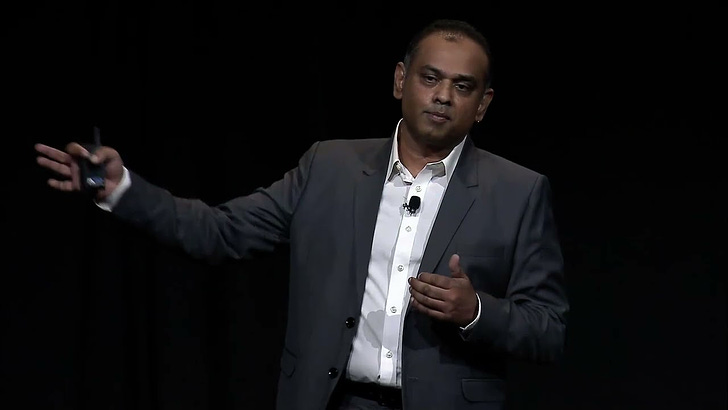🎲 Can AI really reshape the data center landscape?
AI data and trends for business leaders: #2024-15 | AI systems series
Data centers gobble up energy, needing a constant and reliable flow to keep everything running smoothly. Current solutions for powering data centers might not be sustainable for the future of AI. We may need a whole new approach to energy, water, and power consumption. Fossil fuel executives argue that renewable sources like solar and wind can't guarantee this due to their dependence on weather conditions. Nuclear fusion, a cleaner and potentially limitless energy source, could be explored to meet these growing energy needs. However, it doesn't definitively state nuclear fusion is the solution. According to their perspective, this could lead to power disruptions and downtime for data centers, causing potential issues and costs. Plus, their industry profits from continued fossil fuel use.
But there's another side: storage solutions can bank excess renewable energy using batteries, providing backup power during off-peak generation. At the same time, grid upgrades can seamlessly integrate renewable sources, leading to a more stable supply.
Renewables are improving; technology is making them more predictable and efficient.
The dilemma:
Sticking with fossil fuels will provide stability in the short term but contribute to climate change and might not be sustainable in the long run.
Shifting to renewables requires investment in storage and grid upgrades, but it offers a cleaner and potentially cheaper solution in the long run.
↓↓↓ Some facts below ↓↓↓
Decision time: powering data centers with renewables?
While renewables might not be a perfect solution yet, advancements are being made. Investing in a combination of renewables, storage solutions, and grid modernization could be the key to a reliable and sustainable future for data centers.
📌 Fact 1: Optimized resource allocation
AI can analyze data center resource usage in real-time. A study by McKinsey & Company suggests AI-powered dynamic workload placement can improve server utilization by up to 30%, reducing energy consumption1.
📌 Fact 2: Predictive maintenance
AI algorithms can analyze sensor data to predict equipment failures before they occur. A Gartner report states that by 2024, 40% of data center infrastructure will be managed by AI for proactive maintenance, minimizing downtime and costs2.
📌 Fact 2: Enhanced security
AI can detect anomalies in network traffic and user behavior, identifying potential security threats. A study by Accenture highlights that AI can improve threat detection by up to 80%, significantly boosting data center security3.
📌 Fact 3: Data center automation
AI can automate routine tasks like server provisioning, configuration, and patching. A Forbes article mentions that AI-driven automation can reduce human error and streamline data center operations, freeing up IT staff for more strategic tasks4.
📌 Fact 4: Edge computing integration
AI can optimize data processing at the edge of the network, reducing latency and bandwidth demands on centralized data centers. A Deloitte report suggests AI will be crucial for managing edge computing resources and ensuring efficient data flow between edge and core data centers5.
Takeaway
Scenario planning around AI empowers data center leaders to navigate the disruption, ensuring their facilities remain efficient, reliable, and secure in the age of AI.
AI data centers are creating a significant energy challenge.
Traditional solutions might not be enough for the future.
Nuclear fusion is a potential long-term solution, but it's not yet commercially available.
Collaboration between the government and tech companies could be explored to address this challenge.
AI’s disruptive potential can redefine how we manage these critical facilities.
Instead of relying on static data, boards should engage in scenario planning. By exploring various AI-driven possibilities, they can gain a clearer picture of how AI will impact their data center operations:
Efficiency optimization: Can AI optimize server allocation and cooling systems, leading to significant cost savings?
Predictive maintenance: Can AI algorithms anticipate equipment failures, minimizing downtime and maintenance costs?
Enhanced security: Can AI bolster data center security by identifying and mitigating cyber threats more effectively?
Through these discussions, boards can:
Anticipate future needs: By envisioning AI's impact, they can proactively plan for infrastructure upgrades or resource allocation changes.
Shape the future: Boards can go beyond reacting to AI and actively explore how to leverage it for a competitive advantage.
Resources
Reading recommendation
The changing landscape of AI in the data center
Case study: Nvidia acquisition of Mellanox
Continue exploring
Workbook training: Introduction to the data transformation era, part 1
Hello, This part of the training relates to part 1 of the workbook: "Introduction to the data transformation era." You can read it here. Why this training and how it was conceived Traditional methods advocate a series of sequences of various activities, from specifications to system validation, according to a pre-established schedule.
🎲 Data and trends
This email is sent to you because you signed up for Wild Intelligence by Yael Rozencwajg. Thank you for your interest in our newsletter!
Data and trends are part of Wild Intelligence, as well as its approaches and strategies.
We share tips to help you lead, launch, and grow your sustainable enterprise.
Become a premium member, and get our tools to start building your AI-based enterprise.
Cloud-powered technologies for sustainability by McKinsey
The AI Dossier by Deloitte






